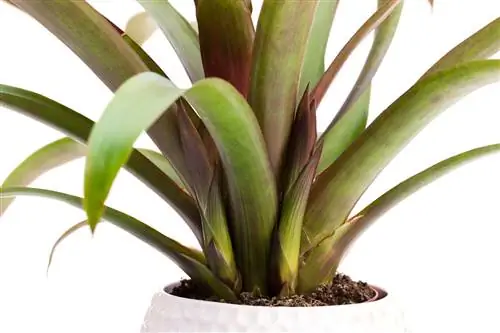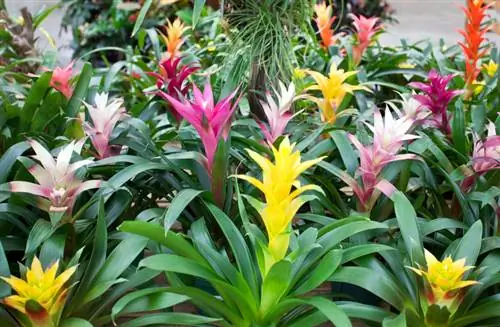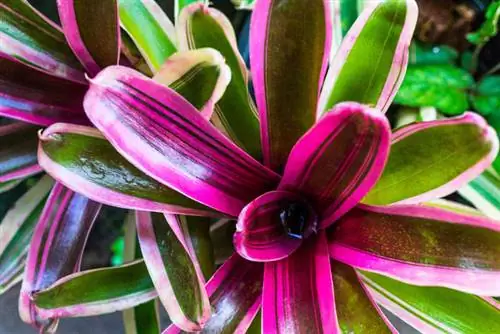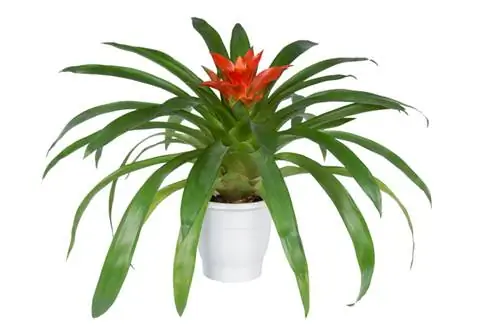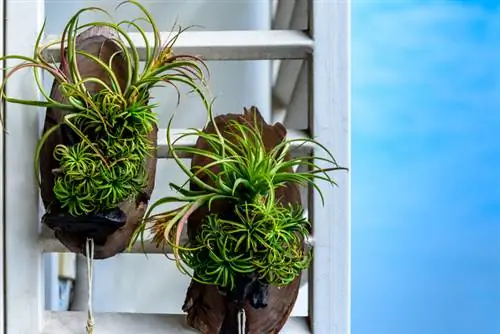- Author admin [email protected].
- Public 2023-12-16 16:46.
- Last modified 2025-01-23 11:22.
Bromeliads are particularly easy to care for and therefore extremely popular plants. Because of their size, they are often used as houseplants. If it is in an ideal location, the bromeliad grows particularly quickly and should therefore be repotted every now and then.

How do you repot the bromeliad correctly?
Atip-proof potis required to repot the bromeliad. This is filled withlime-freeandloose soil. To make it grow faster, the base of the plant needs to be wrapped with a coated wire. After it has completely rooted, it is removed again.
What should you consider when repotting your bromeliad?
When repotting the bromeliad, you shouldbe extremely careful The roots of the plant are usually particularly firmly anchored in the soil and should therefore be loosened with a little patience. A small garden shovel is best suited for this. Never pull the bromeliad out of the pot with your hands. The plant is injured and, in the worst case, dies. Choose a spacious pot for transplanting your hardy bromeliad. This means it has enough space to continue to thrive.
What soil is needed for repotting bromeliads?
When repotting your bromeliad, you shouldnot use normal potting soil. Instead, you need loose soil that is low in s alt. This should also have an acidic pH value between 5.0 and 6.0. A coarse consistency of the substrate is also beneficial for the he alth of the plant. You can make the ideal soil for bromeliads using the following additives:
- Coconut fibers
- Coarse white peat
- Coarse and fine pine bark
- lava granules
- Sand
You should mix these materials well. The consistency of the soil should be adjusted to the size of your bromeliad. A large plant needs a substrate that is as coarse as possible.
How to care for the bromeliad after repotting?
Bromeliads should be placed in awarm location. A room temperature of at least 18 degrees Celsius is ideal for this. This promotes the growth of your plant immensely. You must also ensure that the plant soil is wellmoisturized. Therefore, water the bromeliad at regular intervals. Warm and soft water such as rainwater provides the best possible care for the plant. The excess fluid is completely removed after about 14 days. During the growth phase, adding a little fertilizer is recommended. However, in winter you should avoid fertilizing your bromeliads.
Tip
Fertilize bromeliads with home remedies after repotting
The bromeliad should be supplied with gentle and natural fertilizers. Home remedies are particularly suitable for this. Chemical additives harm the he alth of your plant. Extremely effective care products include coffee grounds, tea, potato water, egg and banana peels, rhubarb leaves and mineral water. These additives are simply mixed into the plant soil or dissolved in the irrigation water. Home remedies contain sufficient nutrients and minerals to promote the he alth of your bromeliad.

